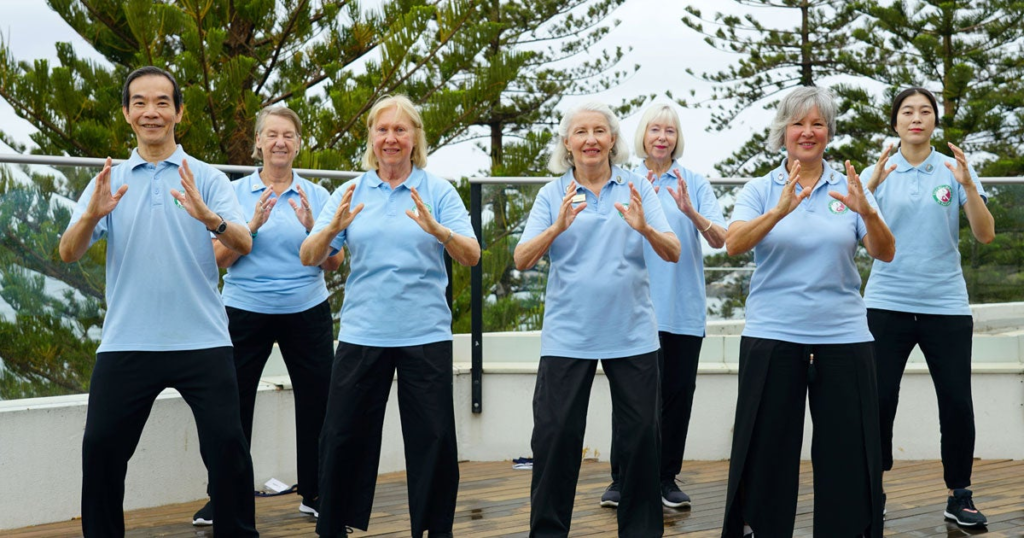In a fast-paced world filled with stress and constant activity, many are seeking ways to enhance their physical and mental well-being. One such practice that has gained popularity for its holistic health benefits is Tai Chi.
Often described as “meditation in motion,” Tai Chi combines gentle movements, deep breathing, and mindfulness, making it an excellent choice for beginners looking to improve their health. This article explores the benefits of Tai Chi and offers guidance for those new to the practice.
What is Tai Chi?

Tai Chi is an ancient Chinese martial art that has evolved into a form of exercise known for its health benefits. It involves a series of slow, flowing movements that are performed in a sequence, each movement transitioning smoothly into the next. The practice emphasizes proper body alignment, balance, and controlled breathing, fostering a sense of tranquility and inner peace.
Health Benefits of Tai Chi

Tai Chi offers a wide array of health benefits, making it an appealing choice for people of all ages and fitness levels. Here are some of the key advantages:
Improves Balance and Coordination: Tai Chi enhances proprioception, which is the awareness of body position in space. This helps improve balance and coordination, reducing the risk of falls, especially in older adults.
Reduces Stress and Anxiety: The meditative aspect of Tai Chi helps calm the mind, reduce stress, and alleviate anxiety. The focus on deep breathing and mindful movement promotes relaxation and mental clarity.
Enhances Flexibility and Strength: The gentle stretching and controlled movements of Tai Chi improve flexibility and muscle strength without putting undue stress on the joints.
Boosts Cardiovascular Health: Regular practice of Tai Chi has been shown to lower blood pressure, improve circulation, and enhance overall cardiovascular health.
Supports Mental Health: Tai Chi encourages mindfulness and present-moment awareness, which can improve mood and cognitive function. It is often used as a complementary therapy for conditions like depression and cognitive decline.
Relieves Chronic Pain: Studies have indicated that Tai Chi can help manage chronic pain conditions such as arthritis and fibromyalgia by promoting gentle movement and relaxation.
Getting Started with Tai Chi

For beginners, starting a new practice like Tai Chi might seem daunting, but it is quite accessible with the right approach. Here are some tips to get started:
Find a Qualified Instructor: Look for a certified Tai Chi instructor who has experience working with beginners. A good instructor will guide you through the basics, ensuring that you learn the correct form and techniques.
Wear Comfortable Clothing: Opt for loose, comfortable clothing that allows for a full range of motion. Lightweight, flat-soled shoes are ideal for practicing Tai Chi.
Start Slowly: Tai Chi is about quality of movement, not speed or intensity. Begin with short sessions, focusing on mastering each movement before moving on to the next. As you become more comfortable, gradually increase the duration and complexity of your practice.
Focus on Breathing: Deep, controlled breathing is a fundamental aspect of Tai Chi. Concentrate on synchronizing your breath with your movements, inhaling and exhaling deeply and evenly.
Practice Regularly: Consistency is key to reaping the benefits of Tai Chi. Aim to practice for at least 15-20 minutes daily, gradually increasing the time as you progress.
Be Patient: Tai Chi is a journey, and progress may be slow at first. Be patient with yourself and enjoy the process of learning and improving.
The Historical Roots of Tai Chi

Understanding the historical context of Tai Chi can deepen your appreciation for this ancient practice. Originating in China over 700 years ago, Tai Chi was initially developed as a martial art for self-defense. Over centuries, it evolved into a form of exercise and meditation that is practiced worldwide.
The principles of Tai Chi are rooted in Taoist philosophy, which emphasizes harmony, balance, and the flow of energy, or “Qi” (pronounced “chee”). This philosophical underpinning is reflected in the smooth, continuous movements of Tai Chi, which are designed to cultivate and balance the body’s Qi.
Incorporating Tai Chi into Your Daily Routine

Integrating Tai Chi into your daily routine can be simple and rewarding. Start by setting aside a specific time each day for your practice. Many people find that practicing in the morning helps them start the day with a sense of calm and focus.
Alternatively, an evening session can be a great way to unwind and release the stress of the day. You don’t need a lot of space or special equipment—just a quiet area where you can move freely.
Community and Social Benefits

Joining a Tai Chi class or group can enhance your experience and provide additional benefits. Practicing with others fosters a sense of community and can be motivating and enjoyable. Social interaction and the support of fellow practitioners can enhance your commitment to the practice.
Additionally, many communities offer Tai Chi classes for different skill levels, from beginners to advanced, providing opportunities to grow and challenge yourself.
Tai Chi and Modern Medicine

The medical community has increasingly recognized the benefits of Tai Chi. Numerous studies have demonstrated its effectiveness in improving health outcomes for various conditions.
For example, research has shown that Tai Chi can improve balance and prevent falls in older adults, reduce symptoms of chronic obstructive pulmonary disease (COPD), and enhance overall quality of life for cancer survivors. Healthcare providers often recommend Tai Chi as a complementary therapy for its holistic benefits.
Conclusion
Tai Chi offers a myriad of health benefits, making it an excellent practice for beginners looking to enhance their physical and mental well-being. Its gentle movements, focus on mindfulness, and emphasis on balance and flexibility make it accessible to individuals of all fitness levels. By incorporating Tai Chi into your daily routine, you can unlock a healthier, more balanced lifestyle. So, find a quiet space, take a deep breath, and begin your journey into the peaceful world of Tai Chi. As you practice, you’ll not only improve your health but also cultivate a deeper sense of harmony and tranquility in your life.

